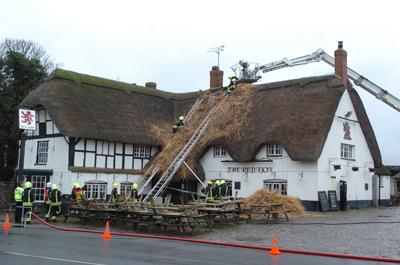I’m finding it quite tricky to write a section of ‘The Angel’ in which Kim is in transition between London and the rural countryside. Part of the reason is that she’s currently making a journey alone, which isn’t a great source of dramatic conflict, except if the conflict is played out within her own mind — and the ideas that I want her to grapple with are difficult to convey without becoming a pretentious candidate for pseuds corner in Private Eye.
I’m tempted to bin, or severely edit, what I’ve written but as I’ve ploughed on I discovered some very surprising connections that suggest that certain themes in the novel are coming from deep in my subconscious.
I have Kim standing at a viewpoint and being blown away (almost literally) by the view. This sets off a series of associations as she spots that the view towards a place called Wittenham Clumps is signposted. This is a series of hills near Wallingford in Oxfordshire and my friend Kathy finds it a beautiful, meditative place and has sent me photos. It has the mystical appearance of the many of the chain of ancient locations that lie on the northern slopes of the Chilterns and the Berkshire Downs  — such as Avebury, Silbury Hill, Barbury Castle, the Uffington White Horse, Whiteleaf Cross, Beacon Hill (near Chequers) and Ivinghoe Beacon. Most of these are linked by the Ridgeway.
Wittenham Clumps was also a location frequently painted by Paul Nash — who is sometimes described as one of the most important British artists of the 20th century. He admired Wittenham Clumps in the same way he revered the standing stones of Avebury which he described as ‘wonderful and disquieting’. Nash’s paintings examine the English landscape in an intuitive, slightly surrealist way that conveys as much about the interior thoughts of the painter as much as the physical landscape. The effect was described by Jonathan Jones in ‘The Guardian’ as being ‘in a distinctive, painted world that is part William Blake, part JRR Tolkien and all England. Red suns rise over chalk hills, grey breakers hit coastal defences. The landscapes of Kent keep recurring, along with unfamiliar views of London…[Nash] paint[ed] his dreams, and mix[ed] up homely landscapes with personal myth in a way comparable to Dalì’s mythologising of Catalonia…his sensibility is as Âknotted as an English oak.’
The quotation above was from a review of an exhibition of Nash’s work in Dulwich earlier this year which was widely reported so I don’t think I really need to stretch artistic licence too much for Kim to have known about Nash and even attended the exhibition. What’s also striking is that, before I found that review, I’d written a description of what Kim sees in the landscape and alluded to both Middle Earth (Brill Hill can be seen from the same view, on which Tolkien based the village of Bree) and the ‘feet in ancient times’ from Blake’s ‘Jerusalem’.
I knew that what was also notable about Paul Nash was that he was an artist in both the World Wars. However, I learned a lot more from watching a fascinating programme on BBC2 this week about the art of the second world war. One of Nash’s most famous paintings is ‘The Battle of Britain’ and perhaps his best known work, which is owned by the Tate, but doesn’t appear to be on display, is ‘Totes Meer‘. This is German for ‘Dead Sea’ and is a depiction of a scrapyard near Cowley (also visible — and referred to frequently in ‘Burying Bad News’) full of fighter aircraft wreckage which he paints to look like a moonlit sea.
I’d enjoyed the David Dimbleby landscape art series ‘A Picture of Britain’ a few years ago and bought the accompanying book as it has some reproductions of some beautiful paintings. I liked the painting featured on the cover of the book so much that I bought a canvas print reproduction from the Tate — it’s called ‘The Cornfield’ and is a late afternoon view of an unmechanised harvest just after the first world war in the rolling Chilterns somewhere near Chalfont St.Giles. I’ve had it hanging on the wall of my study all the time I’ve been writing this novel. The artist is John Nash — who I didn’t realise was Paul Nash’s older brother.
The connections are almost spine-tingling: ‘The Cornfield’, Cowley, the Ridgeway, ‘Totes Meer’, ‘Battle of Britain’, Blake, Tolkien — it’s no surprise I’ve ended up writing about a modern-day German artist marvelling at the history of the English landscape.

